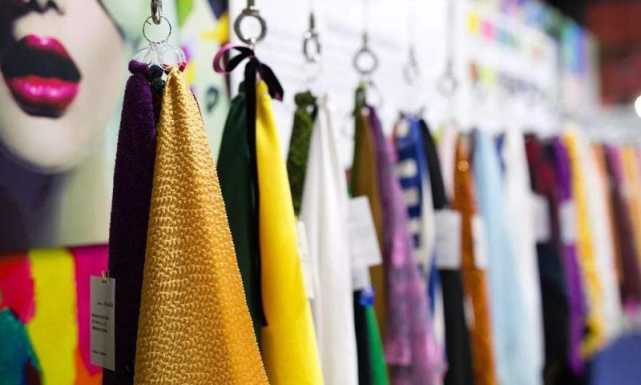
NewsInformation Center
Apparel Alert:: An overview of global trade in textiles and clothing to 2022
2023/03/01
Recently, the World Trade Organization (WTO) released the Statistical Review of World Trade 2022 and updated the total value of global merchandise trade in 2022.
Accelerated growth in global trade in textiles and clothing
The data show that global trade in goods rebounded strongly in 2022, supported by the accelerated vaccination process of the new crown in major developed economies, the spillover effects of fiscal and monetary stimulus policies in Europe and the US, and a significant rise in global commodity prices. in 2022, total global merchandise trade reached US$21.6 trillion, a significant rebound of 16.8% and 27.1% compared to 2020 and 2019 respectively.

A steady recovery in end demand drives accelerated growth in trade in textiles and clothing. According to WTO estimates, in 2022, global textile and apparel exports will total US$903.1 billion, up 16% year-on-year, a growth rate of 18.8 percentage points faster than in 2020, but lower than the growth rate of most industrial goods trade in the same period. In terms of product mix, textile and apparel exports amounted to US$354.27 billion and US$548.83 billion respectively, up 7.8% and 21.9% year-on-year. 2022, global textile and apparel imports amounted to US$966.51 billion, up 13.5% year-on-year, with textile imports amounting to US$389.7 billion, up 7.8% year-on-year and growing at the same rate as in 2020 The import scale hit a record high again; apparel imports amounted to US$576.81 billion, up 17.8% year-on-year, with a growth rate of 26.8 percentage points higher than in 2020.
China's textile and apparel export competitiveness remains stable
In the global supply chain operation and the special conditions of the poor flow of production factors, China has shown a complete textile industry chain stable supply advantages, in the international market demand recovery, export orders back to the support of factors such as, China continues to be the world's largest textile and apparel exports, export competitiveness remains stable. This represents a record high for the scale of exports since the turn of the century, accounting for 35.6% of the global textile and apparel exports and ranking firmly as the world's number one, but due to a decrease in the export of epidemic prevention materials, the share slipped by 2.4 percentage points compared to 2020. Among them, textile exports amounted to US$145.57 billion, down 5.5% year-on-year, accounting for 41.1% of global textile exports, while the market share of the remaining major textile export sources rose to varying degrees; during the same period, apparel exports amounted to US$176.05 billion, up 24.4% year-on-year, accounting for 31.5% of total global apparel exports in 2020 up to 32.1%.
On the import side, China's textile and apparel imports will total US$28.47 billion in 2022, up 20.7% year-on-year, accounting for 2.9% of total global textile and apparel exports, up 0.2 percentage points from 2020.
Stable structure of major sources of global textile and apparel exports
In 2022, emerging Asian economies such as Vietnam, India and Bangladesh saw a steady recovery in textile and apparel processing capacity, with textile and apparel exports growing by 12.6%, 37% and 30% year-on-year, respectively, accounting for 4.7%, 4.3% and 4.2% of total global textile and apparel exports, ranking third, sixth and seventh globally respectively. Germany, Italy, the Netherlands and Spain, the world's leading exporters of fast fashion and high-end luxury brands, designer brands and technical and innovative textiles, continued to lead the world in terms of export volume, with Germany, Italy, the Netherlands and Spain growing by 10.9%, 20.4%, 21.5% and 30.1% respectively year-on-year in 2022, ranking fourth, fifth, ninth and tenth respectively in the world. , fifth, ninth and tenth respectively. The EU's position as the world's second largest source of textile and apparel exports was strengthened, with its share of global textile and apparel exports rising by 0.4 percentage points to 24.9% in 2022.
By product, in terms of textile exports, the shares of India and Turkey are rising fastest, respectively by 1.7 and 0.7 percentage points compared to 2020; Germany and Vietnam rank fourth and seventh in global textile exports, both down one position compared to 2020, while Italy and Pakistan rank sixth and eighth in the same period, each up one position compared to 2020. Among the main sources of apparel exports, France's apparel exports fell out of the global top 10 in 2022, although it maintained a good year-on-year growth of 19.3%.
Major global textile and apparel import markets largely stable
Developed economies in Europe and the US almost dominate the top ten list of textile and apparel import markets. According to WTO data, the EU continued to maintain the top market size for textile and apparel imports in 2022, with imports amounting to US$275.25 billion, up 7.4% year-on-year, accounting for a 1.6 percentage point decline in global import market share to 28.5%. In addition to European countries, the United States and Japan's textile and apparel imports had a market share of 15.1% and 3.7% respectively, with Japan affected by a relatively weak recovery in end demand, the import value of textile and apparel decreased by 5.9% year-on-year, accounting for 0.8 percentage points of the global import market.
In terms of textile imports, Germany and the UK are affected by rising commodity prices pushing up inflationary pressures, with textile imports only ranking fifth and tenth in 2022, down three places each from 2020. In terms of apparel imports, the UK and Italy rank sixth and ninth in the apparel import market, down three and two places respectively from 2020.
Previous: What are the factors that affect the hydrostatic pressure resistance of textiles
N e x t : How do you test the water resistance of medical protective clothing?



